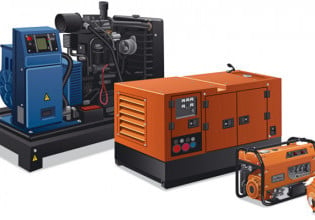Core material is vital when it comes to electromagnetic performance. TT Electronics has developed line of GaN-ready magnetics supporting GaN-based power converter designs to optimize performance.
Various factors affect the performance of inducers and transformers including winding and the shape, size and construction of the core. There are dozens of possible choices for core material and it is a vital factor in the performance of magnetics. It is also increasingly important for meeting the stringent requirement of GaN switching applications.
What is GaN-Ready?
In a nutshell, GaN-Ready Magnetics are performance and size-optimized magnetics for high-frequency switching applications. At powers of up to 1kW switching frequencies are up to 500kHz . At powers ranging from 1- to 10-kW switching frequencies are up to 250kHz. These magnetics have specially selected cores and parasitic management to ensure optimal performance in high switching applications.
The main problem is core loss and, in a magnetic device, this can either be due to eddy currents, the formation of circulating current loops within the core, or to hysteresis - shifts in the magnetic domains within the core material. In both instances, valuable electrical energy is converted into heat, which is problematic and makes this a double loss.
There is no material that is best for all applications. Instead, working with a provider who is well versed in core material options and specifications and giving them as much information as possible about the factors such as the operating temperature and switching frequency of your device, can help you achieve the most efficient magnetics.
Imagine it as a tax or a toll: it is the power that is lost every time electricity is converted from one form to another and can amount to quite a lot. Although the conversions themselves cannot be avoided, new materials and technologies are significantly reducing the amount of loss that is incurred when conversion happens. GaN, gallium nitrate, is among the most promising and is replacing silicon and competing with silicon carbide (SiC) in various switching applications.
The performance advantage that GaN has comes from several of its characteristics. The higher electron saturation velocity of the material, the maximum velocity that an electron reaches in an electric field, allows it to outperform silicon at high frequency. The high critical field of the material, which is the highest magnetic field under which a material remains superconducting, enables devices based on GaN to operate at lower leak currents and higher voltages than those based on silicon.
Finally, the electron mobility, how fast an electron can move through it, performs better than even SiC. As a result, in high-frequency high-voltage applications, nothing outperforms GaN. When compared to alternatives, GaN is compact, fast, light, cool running and efficient. In order to prevent bottlenecks, the challenge is now to match the performance of GaN in other device components.
One of the most important components in high-speed switching applications is PFC inductors and transformers. The benefits of GaN can be lost if those magnetics are not designed appropriately for use with GaN switches. Peak performance at the high switching frequencies of GaN can depend on the magnetic core's: material; leakage conductance; wire selection; and capacitance management.






